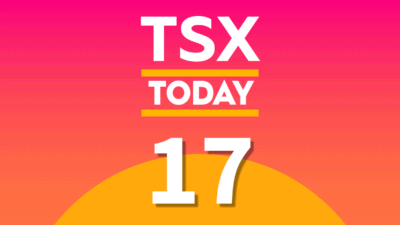Are you familiar with Stingray Digital Group Inc. (TSX:RAY-A)?
If you watch cable TV, you might be. You see, Stingray is the company behind all the music stations you get with your monthly cable package. For most people, it flies under the radar.
Two years ago almost to the day, I suggested that investors consider investing in the tiny Montreal company because the giant Caisse de dépôt et placement du Québec had acquired two million subordinate voting shares from the company for $14.3 million, thereby tripling the pension fund manager’s investment in the company and giving Stingray a big shot in the arm.
“Stingray already has a strong reputation through its global footprint and demonstrates significant growth potential,” Christian Dubé, the Caisse’s executive vice-president in charge of Quebec-based investments, said in 2016 at the time of its investment. “As a long-term investor in high-performing companies, it was a natural choice for us.”
Paying $7.15 a share, the May tumble of Stingray’s stock price — down 23% since announcing May 2 that it would acquire Newfoundland Capital Corporation (TSX:NCC.A) for $506 million plus the assumption of $112 million in debt — the Caisse has seen a chunk of its paper profits disappear in a hurry.
The rationale for buying old school radio stations
The acquisition of Newfoundland Capital gives Stingray 72 radio stations in seven provinces, including five stations in Nova Scotia where Newfoundland Capital is based. Newfoundland Capital has two stations in Toronto, two in Ottawa, two in Calgary, three in Edmonton, and two in Vancouver.
Why old-school radio?
Stingray wants to be able to take its business across multiple platforms, whether online, mobile, on your cable box or over the traditional radio.
Acquiring Newfoundland Capital gives it an established sales team across the country to promote and cross-sell Stingray’s various advertising opportunities while boosting free cash flow helping it make more acquisitions down the road.
It is now the largest publicly traded independent media company in Canada. Already very profitable and growing — revenues increased by 25.1% in fiscal 2018 to $127.0 million with a 22.6% increase in adjusted EBITDA to $41.5 million — Newfoundland Capital’s radio operations will take it to the next level.
The Caisse agrees, as they’ve closed on a $40 million private placement as part of the financing package for Stingray to pay for the acquisition.
What’s got me interested
There’s a school of thought in investing that you have all kinds of reasons why insiders sell stock, but only one reason why they buy — because they think it’s undervalued.
In over 10 trading days between June 11 and June 22, Stingray Chairman Mark Pathy bought 492,050 shares of its stock on the open market for an average price of $8.75, thereby increasing his holdings by 74% in two weeks.
A $4.3 million purchase of shares on the open market is a buy signal if there ever were one.
On January 25, Fool contributor Joey Frenette recommended Stingray stock, suggesting that it’s a small-cap stock with next-level growth. At the time it was trading at $9.96. At today’s prices, it’s an absolute buy for anyone looking for a 2.7% yield that has capital gain written all over it.
Buy on the dip? Absolutely!









